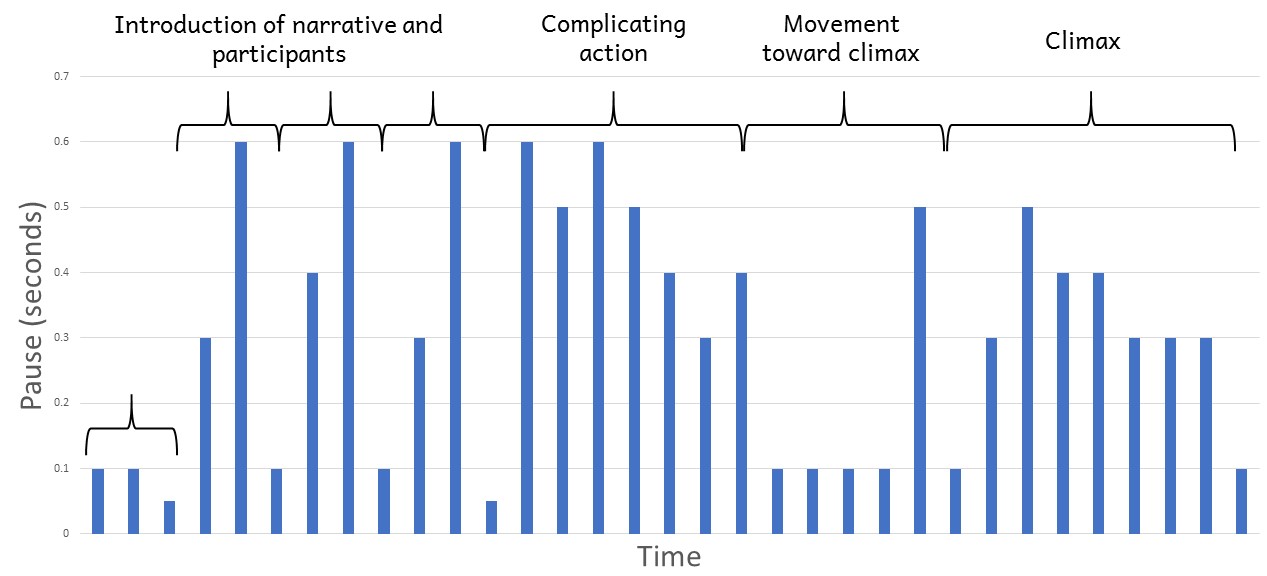Ékegusií has many types of intonational contours, each with a dedicated function. Classifying these contours as simply H or L, or falling or rising, fails to capture important differences between them. Some examples:
- sharp terminal rise: backgrounding function, for conditionals, new topics, and ‘when’-clauses
- gradual terminal rise: continuing topic, more information to come
- high level register: extended sequences of events
- sharp fall to low register: conclusion of sequence of events
Speakers attend to the overall, conventionalized pattern of the intonational contour, rather than individual pitch targets.



